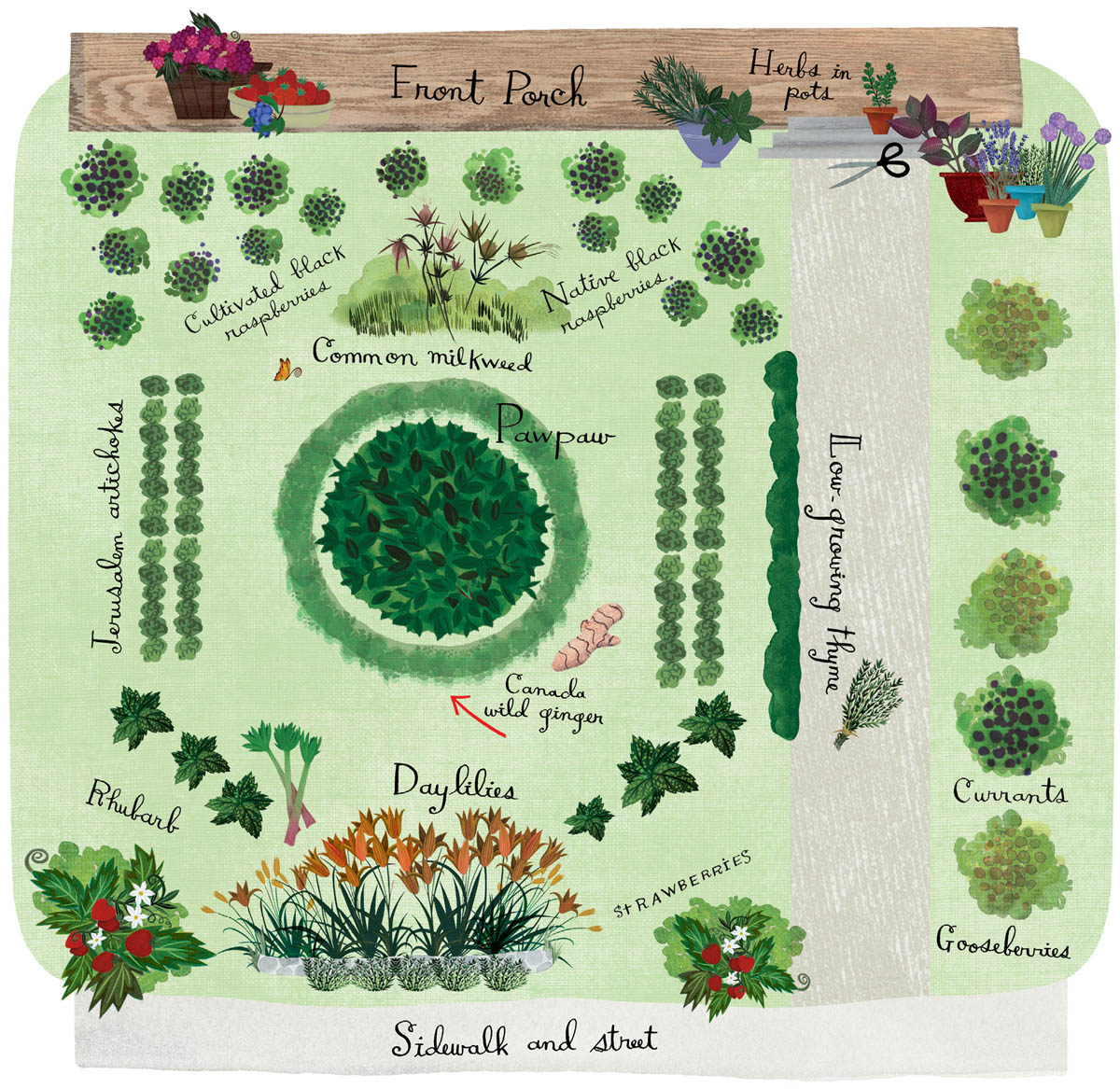Sarah’s Garden Plan

Sarah Elton’s quest to offer her children “real” food prompted her to dream up a front yard full of forage-able berries and brambles including raspberries, strawberries, and black raspberries. Her plan, which is based on her raspberry garden, concentrates on native edibles that are hardy and drought-tolerant and require less fussing than introduced species.
Sarah’s first foray into growing her own food plants began about eight years ago, when a “volunteer” raspberry popped up in her front yard. She moved the raspberry bush to the backyard three times, but it kept coming up in the front. Eventually, she says, she “realized how lovely it was to have food on the front lawn.” She soon expanded to tomatoes and beans, growing them in pots in the backyard where there is more sun.
Blending in with the neighborhood. Like many urban properties, her home sits beside a busy street. “I have tried to take good care of the garden so that it still fits in with the neighborhood,” Sarah says. “Most people don’t seem to notice, but those who pay attention to local botany frequently stop to ask me about the different plants growing in the yard,” she adds.
The range of edible plants provides a steady supply of food from spring to autumn, a large portion of which Sarah’s family enjoys as they harvest — hence, a “foraging” garden. Children will particularly love the berry plants.
No-fuss plants. Careful plant selection with a concentration on natives has also reduced the need to fuss over the garden. “I’ve benefited from the drought tolerance of having native plants in my front yard,” she says. “Even in the deep heat of summer, and with my sandy soil, I still rarely have to water.”
Sarah has also included edible ornamental plants, such as milkweed, daylilies, and wild ginger. The young shoots (under 6 inches) of milkweed can be boiled and used like asparagus, while the roots of wild ginger offer a mild, but pleasing, peppery-ginger flavor to dishes. Sarah’s family enjoys adding the daylily buds to omelets.
A narrow pathway traverses the space between the food plants, allowing one to easily harvest food and transport organic materials. Sarah admits that the raspberries occasionally overtake that path, but she doesn’t mind — the plants provide her family with about $100 worth of organic berries every season.
